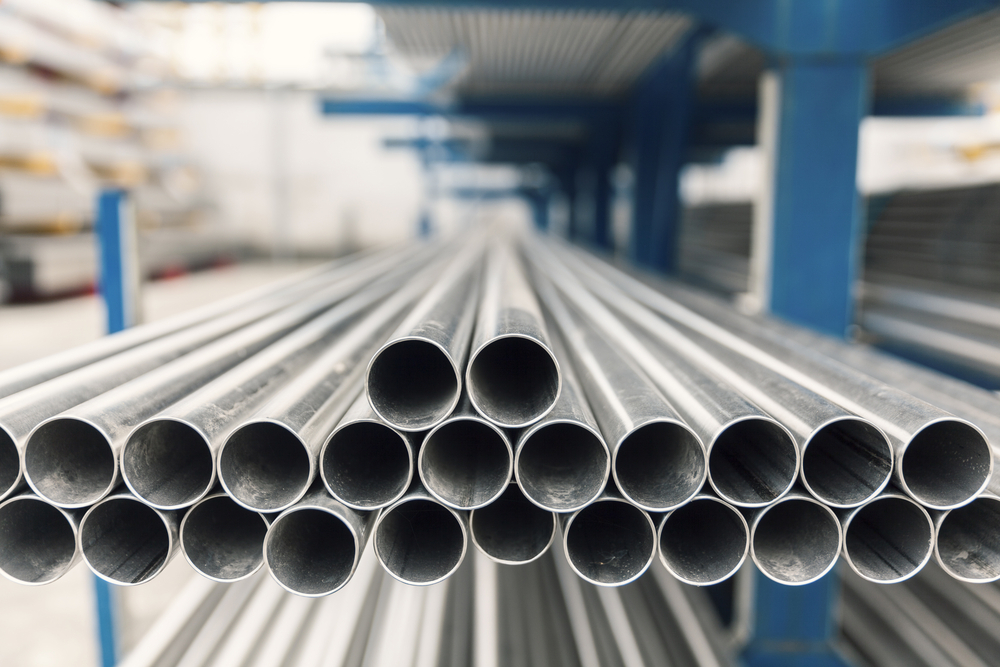1-Steel Rate in Pakistan - Providing Competitive Pricing for Vital Steel Products:
2-Introduction
The steel industry in Pakistan has witnessed substantial growth in recent years, fueled by rising infrastructure development and construction activities. This surge in steel demand has led to pricing shifts across steel product segments. One such vital steel product – steel pipes – has managed to provide competitive pricing despite demand growth. Steel rate in Pakistan play a vital role in Pakistan’s developing economy and infrastructure growth story. As the country invests heavily in mega projects like the China-Pakistan Economic Corridor, steel pipes provide a durable, cost-effective solution across applications like constructing roads, buildings, water supply lines and gas pipelines.
The high demand has resulted in a thriving local steel rate in Pakistan in the manufacturing segment. Steel forms the foundation of modern infrastructure and industrial growth. As nations progress, steel finds indispensable applications across sectors like housing, energy, transportation, factories, machinery and equipment.
Incumbent and new steel makers have undertaken huge capital investments to enhance production scales. These plants leverage Pakistan’s innate relative advantages around raw material availability and conversion costs. For decades, the nation has nurtured a cost-competitive steel recycling ecosystem. Abundant and low-cost scrap availability forms the cornerstone for affordable steel pipe production. Policy impetus through tax breaks, subsidized electricity for night operations and anti-dumping restrictions further aid competitive domestic capacities. As Pakistan steels itself for the next wave of nation-building, steel pipes will fuel progress; with both self-sufficiency and global cost advantage powering localization and exports respectively.

3-Competitive steel rate in Pakistan
Local Pakistani steel pipe manufacturers have managed to keep production costs low, which translates into highly competitive market rates for consumers. Key factors aiding competitive pricing include:
1-Abundant availability of scrap steel
2-High production capacity utilization,
3-Lower energy costs
4-Affordable labor
The factories operate 24×7 leveraging cheaper nighttime electricity. Optimum capacity usage spreads fixed costs. Cheaper migrant labor manages non-automated processes like quality testing and raw material handling. These factors combine to ensure steel rate in Pakistan remain affordable despite global commodity price volatility.
The expanding production capacities also cater to growing export demand from Middle Eastern and African markets. Bigger combined volumes provide higher negotiation power for input materials and fuel rates. It also attracts crucial foreign investments for upgrading technology and environment compliance —critical for competing globally.
4-Why Steel Rate in Pakistan are competitive?
As Pakistan rapidly urbanizes, steel pipes find increasing applications. Water supply for growing city populations requires durable pipeline networks which steel pipes provide. Smart city projects also depend on steel for structural construction. And steel pipes remain indispensable for industrialization by enabling oil, gas and petrochemical transport infrastructure. Hence, competitive input pricing aids greater penetration and ensures inclusive infrastructure growth.
The latest industry estimates suggest that local steel pipe production capacity will keep pace with double-digit demand growth in the foreseeable future. In turn, economies of scale, process optimization and favorable labor policies can facilitate maintaining lowest quartile market pricing globally. Thereby, competitive steel pipe input costs combined with efficient manufacturing and strategic policy interventions will drive Pakistan’s next wave of urbanization and industrialization.
5-Steel Pipes – A Key Component in Pakistan’s Infrastructure Growth Story
Steel pipes form a crucial component across infrastructure sectors like oil and gas, water supply, and construction in Pakistan. Their strength, longevity, and cost-effectiveness make them an essential input for building pipelines, housing complexes, commercial buildings, and power plants. With increasing urbanization and mega projects underway, steel pipe demand is mounting. Competitive pricing has enabled wider adoption across small and mega projects alike.
6-Historic Trends for Steel rate in Pakistan
Steel rate in Pakistan has remained competitive compared to global averages, owing to favorable market dynamics. Local pipe producers have managed to optimize production costs despite surging steel rate in Pakistan input prices over the last decade. Capacity enhancements, reliance on scrap steel inputs, and export opportunities have aided competitive pricing too. This has made Pakistan an attractive regional steel rate in Pakistan export hub.
7-Key Reasons for Low Steel Rate in Pakistan
Abundant Scrap Steel Availability – Scrap reuse lowers input dependency, enabling cost control
High Production Capacity Utilization – Optimum plant utilization aids volume growth and cost dilution
Low Energy Costs – Cheaper electricity compared to regional peers helps minimize fuel expenses
Cheap Labor – Pakistan has significantly lower labor charges, reducing overall costs
Regional Export Opportunities – Rising construction demand across Asia, Africa aids additional volume
Future Outlook – Growth Drivers to Sustain Competitive Pricing
With several mega infrastructure projects underway, steel pipe demand is set to accelerate over the next decade. This presents an opportunity to sustain pricing competitiveness. Local producers are expanding capacity in anticipation. Key growth factors include:
1. China-Pakistan Economic Corridor Projects
2. Rapid Urbanization and Smart City Projects
3. Improving Regional Connectivity via Pipelines
4. Construction Industry’s Double-Digit Growth Trajectory
5. Increasing Export Volumes to African and Middle East Markets
The latest expansions, technology upgrades, process optimizations and trade policy incentives are expected to drive Pakistan’s steel rate in Pakistan industry growth at a CAGR of 10% till 2030. Thereby keeping pricing competitive despite rising regional demand.

8-Importance of steel rate in Pakistan
Steel pipes enjoy a competitive pricing advantage in Pakistan, fueled by market efficiencies, abundant raw material supply and growing domestic/export demand. With the right policies and investments, Pakistan can consolidate its position as a reliable low-cost regional supplier.
This will be pivotal to keep up with the domestic infrastructure growth trajectory over the next decade. Competitive input pricing will also enable infrastructure project viability and faster completion. Thereby steel pipes pricing will remain an important Bellwether for broader steel demand-supply economics.
Policy Making for control of steel rate in Pakistan
Steel pipes have emerged as the backbone of Pakistan’s infrastructure boom. As the government undertakes large scale development projects and urbanization accelerates, steel pipes drive progress as an indispensable construction input across water, energy and transportation verticals. Local pipe manufacturers have consolidated capacity and achieved global cost competitiveness through various interventions. Abundant, low cost raw material access ensures input security.
Production process improvements have led to outstanding conversion efficiency and plant utilization levels. Supportive policy incentives promote capacity upgrades while boosting export competitiveness. As external demand accelerates from regions like the Middle East and Africa, Pakistan is poised to become an even more formidable player. With immense growth potential ahead, both via domestic infrastructure pipeline and exports, competitive steel pipes will catalyze national development.
9-FAQs
Q1. How have Pakistani steel pipe makers achieved such low production costs?
Key enablers like cheap scrap steel access, 24×7 factory production cycles utilizing low night-time electricity rates and affordable migrant labor have optimized plant-level costs.
Q2. What growth rates are expected ahead?
Investments under CPEC are expected to drive 10-15% annual growth for the sector over the next 5-10 years. Expanding pipe exports also offer additional growth vectors.
Q3. How will new capacity impact pricing?
As leading players expand capacity, greater economies of scale and higher plant utilization will improve cost absorption, keeping market rates competitive.
Q4. Does anti-dumping regulation help local players?
Yes, anti-dumping duties levied on specific nations blocking unfair inflows has helped protect existing capacities and favor additional investments.
Q5. How can Pakistan build on the early cost advantages?
Policy measures promoting new technologies like induction furnaces, integrated steel plants and improving scrap management ecosystem will help achieve raw material security while creating a virtuous cycle of efficiency gains through industry 4.0 solutions.

We have the best quality steel pipes. and we hope you have the best experience if you take our products.
© 2024 Mehboob Steel Traders. All rights reserved.

